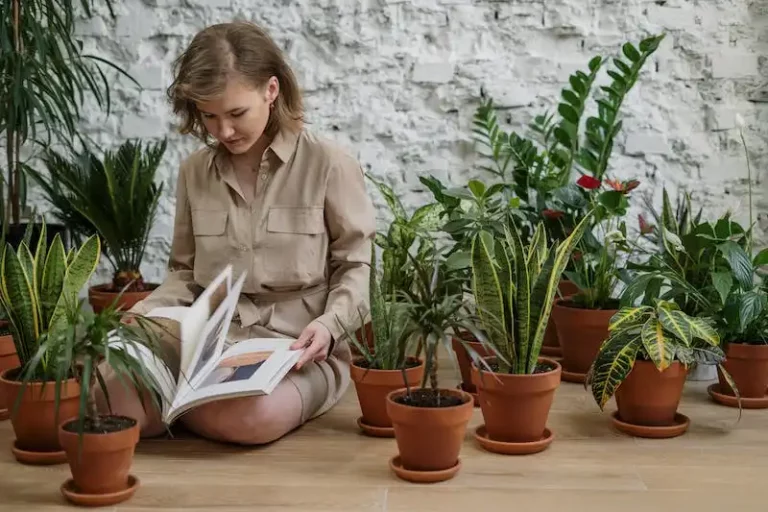Planting apple trees is an exciting task for any gardener. However, it’s important to consider the spacing between each tree in order to give the fruits enough room to grow. The distance between apple trees can vary depending on their size and growing requirements.
For standard-sized apple trees, a spacing of about 20 to 25 feet apart is recommended. This will allow the trees to reach their full height and width without crowding each other. However, for dwarf-sized apple trees, a spacing of about 10 to 12 feet may be sufficient.
Extension services, like the University of Maine Cooperative Extension, suggests planting standard-sized apple trees about 18 to 20 feet apart in the row and leaving about 30 feet between rows. For dwarf-sized apple trees, they recommend a spacing of 10 to 12 feet in the row and about 20 feet between rows.
The spacing between apple trees is also influenced by factors such as the type of soil, growing conditions, and the desired fruit size. It’s important not to plant the trees too close together, as this can lead to competition for resources and a decrease in fruit quality. However, planting them too far apart may result in wasted space and inefficiency.
When determining the spacing between apple trees, it’s best to consult a local extension service or contact a knowledgeable gardener like Dave Wilson Nursery. They can provide specific guidelines based on your location and specific apple tree variety.
Cooperative Extension Tree Fruits
In growing tree fruits, such as apple trees, the spacing between them is of utmost importance. The Cooperative Extension recommends planting apple trees about 12 to 18 feet apart. This spacing has resulted in optimal growing conditions for the trees, allowing them to receive sufficient sunlight and airflow while providing enough room for the roots to spread.
The importance of spacing between apple trees cannot be overstated as it directly impacts their overall health and productivity. When apple trees are planted too close together, they can compete for resources, such as water, nutrients, and sunlight, which can lead to stunted growth and reduced fruit production. On the other hand, if they are planted too far apart, it may result in wasted space and inefficient use of garden or orchard space.
Cooperative extension services, like the one provided by Maine’s Cooperative Extension, offer valuable guidance and support to fruit tree growers. They can offer expert advice on the proper spacing and planting techniques for various tree fruits, including apples. Growers can contact their local cooperative extension office for specific recommendations based on their region, climate, and specific needs.
When determining the spacing for apple trees, it is also important to consider whether the trees are standard-sized or dwarf-sized varieties. Standard-sized apple trees can grow up to 30 feet tall and wide, while dwarf-sized varieties are much smaller in size, typically reaching a height and width of 8 to 10 feet. The spacing between dwarf-sized apple trees can be closer, around 8 to 12 feet apart, while larger standard-sized trees require more distance between them.
In addition to apple trees, the same spacing guidelines can be applied to other tree fruits, such as cherries and nectarines. These fruits typically require similar spacing to ensure proper growth and fruit production. Growers may also consider using trellises or fences to provide support and guide the growth of the trees.
If you have any additional questions or need further guidance on planting apple trees or other tree fruits, consult the cooperative extension office in your area. They are there to help growers and provide the best recommendations for successful fruit tree plantings. Dave Wilson, a leading expert in fruit tree growing, has also published a comprehensive guide on fruit tree planting and care, which can be a valuable resource.
Remember, proper spacing between apple trees, and other tree fruits, can greatly improve their health and productivity, resulting in a bountiful harvest for years to come.
“`html
Growing Fruit Trees in Maine
When it comes to growing fruit trees in Maine, spacing is of utmost importance. The distance between trees determines how much they can grow and how much fruit they can produce. Maine is known for its cold climate, which can pose challenges for fruit tree growers. However, with the right planting and growing techniques, it is possible to have a successful fruit orchard in Maine.
The best spacing for fruit trees in Maine depends on the type of trees being planted. For standard-sized trees, they typically require a spacing of 30 to 35 feet apart. This allows enough room for them to grow and develop without competing for resources. However, for dwarf-sized trees, the spacing can be reduced to around 10 to 15 feet apart.
One common strategy used by fruit tree growers in Maine is to plant apple and nectarine trees together. These two fruits have similar growing needs and can be spaced accordingly. Planted in a cooperative manner, they can work together to provide support and shade to each other.
A practical way to space fruit trees in Maine is to create a hedge or fence using the trees. This not only provides an aesthetically pleasing layout but also helps protect the trees from wildlife and harsh weather conditions. A spacing of around 6 to 8 feet between trees in the row will allow for proper airflow and sunlight penetration.
Grafting is another technique that can be used to help with the spacing of fruit trees in Maine. By grafting two different fruit varieties onto one rootstock, growers can have multiple fruits on a single tree. This reduces the number of trees needed and allows for easier maintenance and harvest.
| Growing Category | Ideal Spacing |
|---|---|
| Standard-sized trees | 30-35 feet apart |
| Dwarf-sized trees | 10-15 feet apart |
| Apple and nectarine trees | Cooperative planting |
| Create a hedge or fence | 6-8 feet between trees in a row |
By following these spacing guidelines and considering the growing categories, fruit tree growers in Maine can help ensure the success of their orchard. If you have any questions or need more specific information, it’s always best to consult a local expert or reference reliable sources.
A Guide to Fruit Tree Spacing
When planting fruit trees, it is important to consider the spacing requirements. Proper spacing allows each tree to receive adequate sunlight, nutrients, and airflow, which are essential for healthy growth and fruit production. The basic rule of thumb for fruit tree spacing is to place the trees far enough apart so that their canopies do not touch when fully grown.
The exact spacing requirements may vary depending on the type of fruit tree and the specific growing conditions. For example, apple trees typically need to be spaced about 15 to 20 feet apart, while cherry trees may require a distance of 12 to 15 feet between each tree. Nectarine trees, on the other hand, need a bit more space and should be spaced about 20 to 25 feet apart. These spacings give the trees enough room to grow and ensure they have adequate access to sunlight.
In order to determine the appropriate spacing for your fruit trees, it is best to consult with your local Cooperative Extension or a knowledgeable orchard grower. They can give you specific recommendations based on your climate, soil conditions, and the type of fruit trees you plan to plant.
While it may be tempting to plant the trees closer together to make the most of available space, overcrowding can have negative effects on the health and productivity of the trees. When trees are planted too close together, their canopies may compete for light and air, leading to increased disease and pest problems. Additionally, overcrowded trees may have stunted growth and produce smaller and lower-quality fruits.
On the other hand, planting fruit trees too far apart can result in wasted space and lower overall fruit production. The trees may not be able to cross-pollinate effectively, and it can be more difficult to manage the orchard and harvest the fruits.
The distance between fruit trees also depends on whether you plan to grow dwarf, semi-dwarf, or standard-sized trees. Dwarf trees are smaller and require less space, while standard-sized trees are larger and need more room to grow. Semi-dwarf trees fall in between and have varying space requirements depending on the specific variety.
Planting fruit trees in a hedgerow or along a fence can be a space-saving alternative that allows for closer spacing. By training the trees to grow along a trellis or fence and practicing proper pruning, you can effectively manage the size and shape of the trees, while still giving them adequate space to grow and produce fruits.
In addition to the primary purpose of producing fruits, fruit trees can also provide additional benefits to a garden or orchard. They can offer shade, attract wildlife, and create a visual barrier or privacy screen. However, it is important to consider these additional needs when planning the spacing between your fruit trees.
In conclusion, proper fruit tree spacing is of utmost importance to ensure optimal growth and fruit production. Consulting with experts and considering the specific requirements of each fruit tree variety will help you determine the appropriate distances between trees in your orchard or garden. Remember to consider factors such as tree height, canopy size, and the need for cross-pollination. With the right spacing, your fruit trees will thrive and provide a bountiful harvest for years to come.
Fruit Tree Spacing: How Far Apart Do You Plant Fruit Trees In The Garden
When it comes to fruit tree spacing, the requirements can vary depending on the type of fruit tree you are planting. However, generally speaking, the spacing between fruit trees should be similar for most varieties. Whether you are planting apple trees, cherry trees, nectarine trees, or any other fruit trees, there are some guidelines you can follow to determine how far apart to plant them in your garden.
For standard-sized fruit trees, the recommended spacing is typically between 12 to 20 feet (3.6 to 6.1 meters) between each tree. This allows enough space for the trees to grow to their full size and for their branches to spread out properly. If you are planting dwarf-sized fruit trees, you can reduce the spacing to around 8 to 10 feet (2.4 to 3 meters) between each tree.
It is important to consider the amount of space each fruit tree needs when determining the spacing. Some fruit trees, like apples and nectarines, require more space to grow properly, while others, like cherries, can be planted closer together. Additionally, the spacing can also depend on whether you plan to prune or trellis the trees to keep them in a specific size or shape.
In order to give you a better idea of the recommended fruit tree spacings, here is a guide:
| Type of Fruit Tree | Spacing Between Trees |
|---|---|
| Apple Trees | 12 to 20 feet (3.6 to 6.1 meters) |
| Cherry Trees | 12 to 16 feet (3.6 to 4.9 meters) |
| Nectarine Trees | 12 to 18 feet (3.6 to 5.5 meters) |
| Other Fruit Trees (e.g., peach, pear) | 12 to 20 feet (3.6 to 6.1 meters) |
It is worth noting that these spacings are just general recommendations. The actual spacings may vary depending on the specific requirements of the fruit tree variety you are planting and the growing conditions in your garden. For more accurate spacings, it is best to consult a local gardening guide or contact your local cooperative extension office.
Another factor to consider when determining fruit tree spacing is their pollination needs. Some fruit trees, like apples, require cross-pollination from another variety in order to produce fruits. In these cases, it is important to plant compatible varieties within the recommended distance for efficient pollination.
Lastly, the spacing should also take into account any additional needs of the fruit trees, such as trellis or fence requirements. Some fruit trees, like apple trees, may benefit from trellising to support their branches and fruits. This can reduce the amount of space they need to grow horizontally but may require additional vertical distance for the trellis structure.
Overall, fruit tree spacing is a vital consideration when planning your garden. By giving each fruit tree the necessary space, you can ensure optimal growth, fruit production, and airflow, while also making it easier to manage and maintain your orchard. So, before growing fruit trees, make sure to do your research and determine the best spacing for your specific fruit tree varieties and garden conditions.




